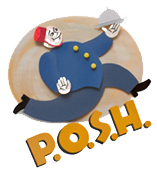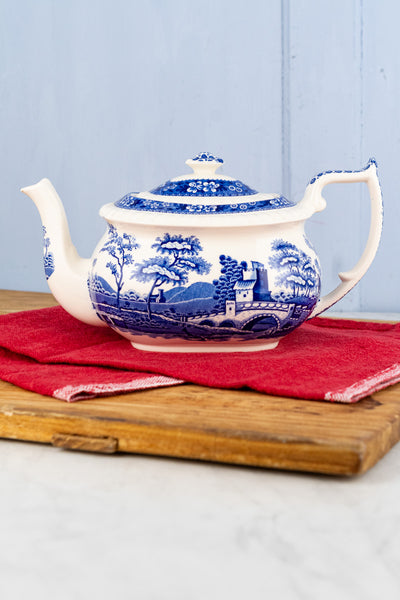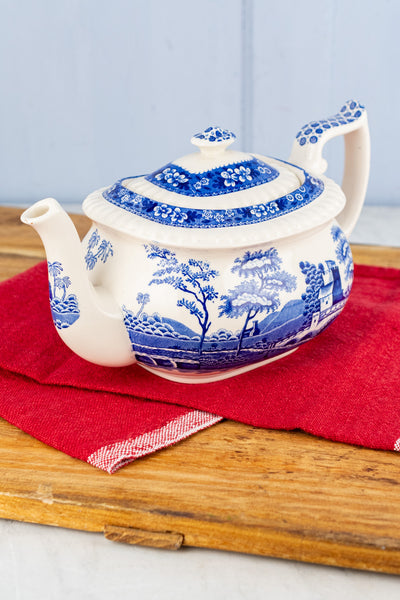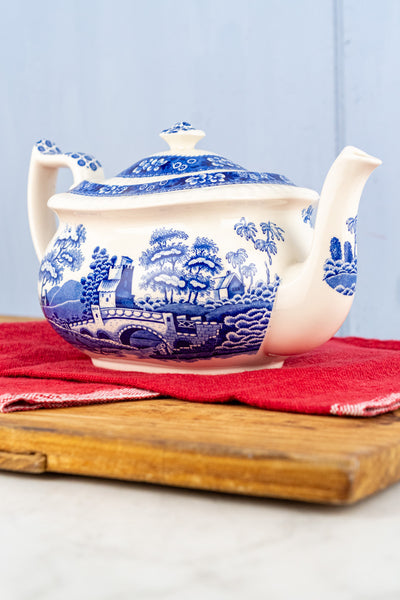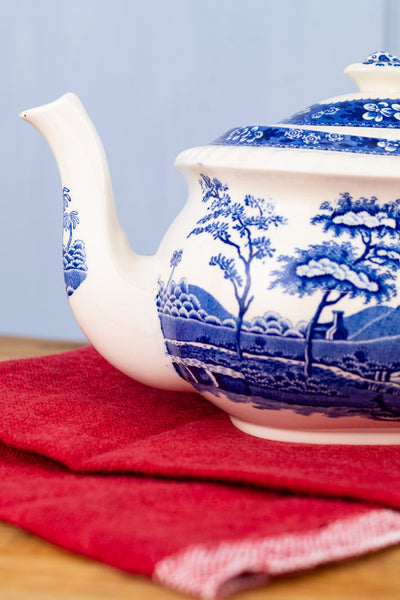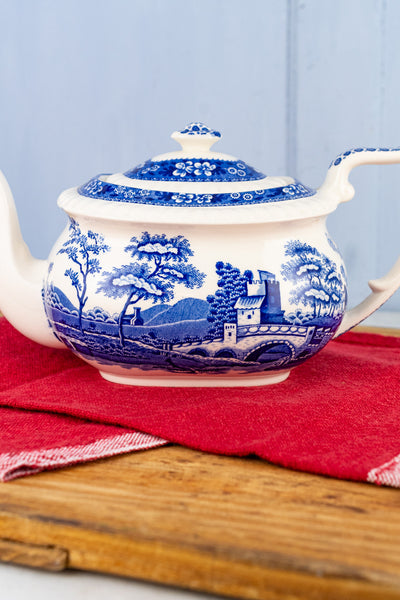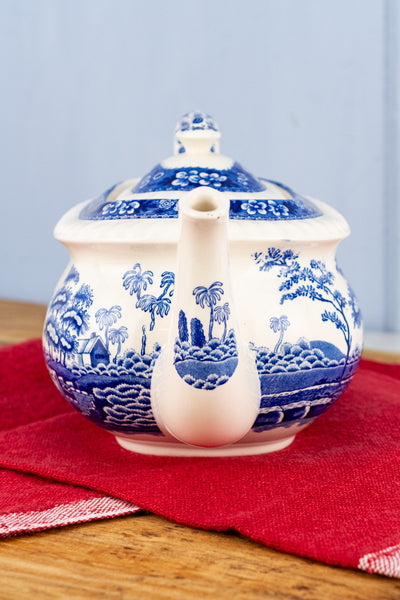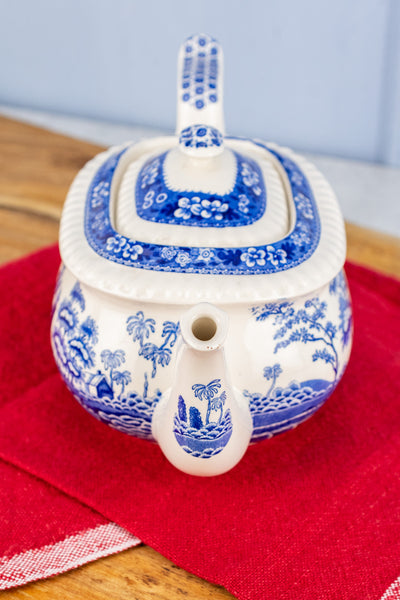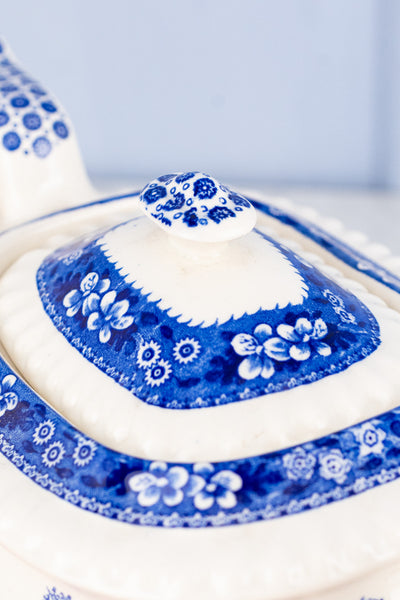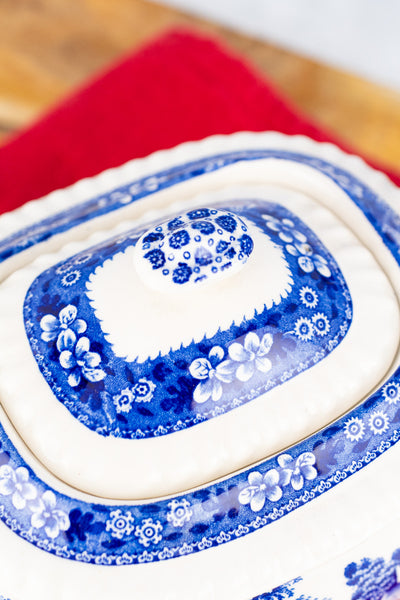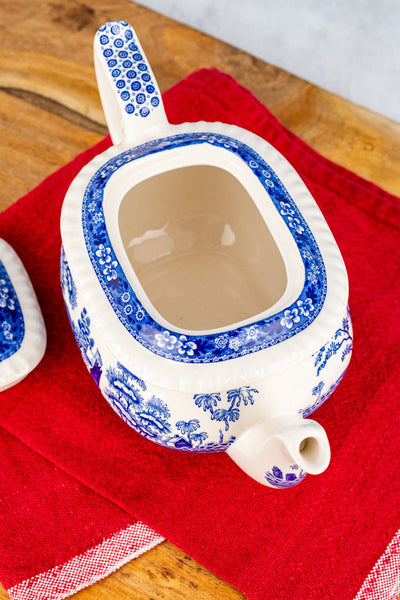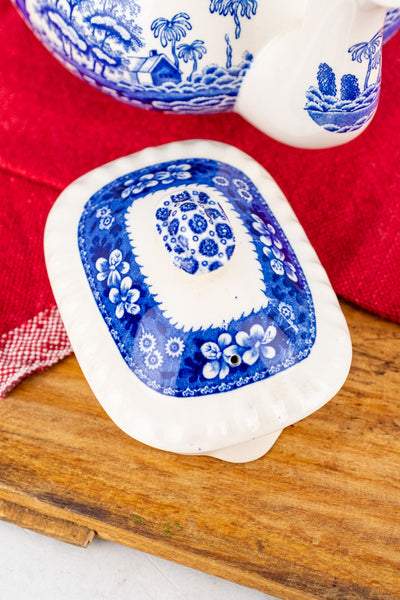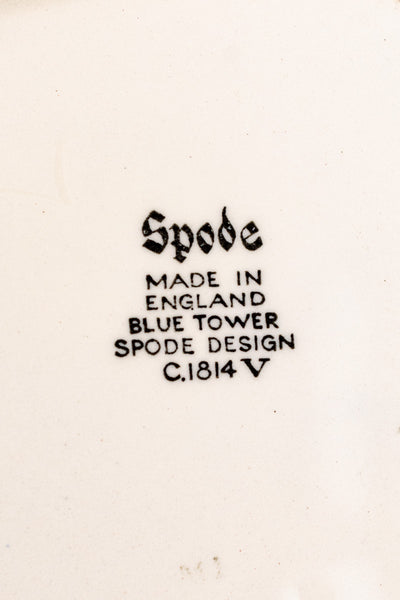Vintage Spode Teapot
Vintage Spode Teapot
$150.00
"The Spode factory was without doubt the most important factory in the 19th century"
Antoinette Faÿ-Hallé, Curator, Sèvres
With a stately aesthetic that is timeless and rich, we are delighted to present a vintage Spode teapot in their beloved Tower pattern. Introduced around 1814, the pattern was derived from a printed illustration from French author James Merigot's 'Views of Rome and its Vicinity' depicting the Bridge of Salaro, near Rome. Tower pattern was printed in a variety of colors during during its production history but particularly in blue and later in pink, with this dark blue shade indicative of the final years of the pattern's production.
A gorgeous addition to your teapot collection!
Strictly one-of-a-kind and subject to prior sale. In excellent vintage condition. 10.75"D x 5.5"H. Handwash only.
Learn More About Spode China
Spode China was started in 1767 by Josiah Spode I, who became a visionary in business and in tableware. In the late 1700s, the popular chinaware from the Orient was becoming scarcer and Britain needed new sources for their dinnerware needs. Josiah Spode answered the call.
At the age of 16, Josiah had apprenticed with master potter Thomas Whieldon. He learned much about pottery and design and in 1770 opened the doors to his own porcelain factory in Stoke-on-Trent.
The Spode factory, under the careful guidance of Josiah, was responsible for two of the most important breakthroughs in English ceramics: first, the formula for bone china that is used today and, even more importantly, he perfected the "underglaze" printing process that is practiced to this day. Many intricate patterns could be applied to pieces without the worries of chipping, scratching and fading.
Delightfully little has changed since the Spode company first began producing English pottery in the 1700s. Its factory, still located in Stoke-on-Trent, is in operation today, and its methods of production have been modified only slightly. Transferware patterns continue to be created with handcrafted copper plates and hand-rubbed transfer sheets, and the earthenware is still made with ingredients that have been used since 1820.
